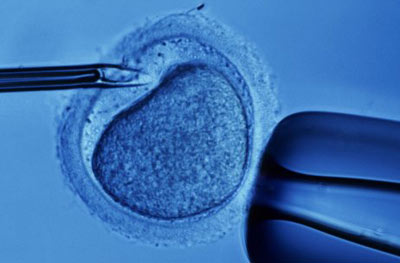What are designer babies? It is a scientific term used by the media to describe the future of transforming and selecting our children’s genes for desirable characteristics. It also allows parents and doctors to use advanced reproductive technologies to screen embryos for genetic disorders and contribute in selecting healthy ones. This can influence parents’ decisions in choosing desired medical and cosmetic characteristics for their baby to possess. To reduce the chance for a child to be born with a genetic disorder, IVF (In Vitro Fertilization) is used to fertilize eggs with sperm on test tubes outside the mother’s body in a laboratory. Since this permits the ability to choose the sperm for the egg, it can also be used to determine the sex and the genes of the baby. IVF combined with genetic engineering ensures the presence or absence of particular genes or characteristics in designing a baby. Though this extrordinary idea seems to be out of hand, it has become capable and experienced within mankind. This topic approaches many pros and cons that can not only benefit a mother, but can disrupt her child from truly becoming what nature planned it to grow up to be.
 |
| The above image represents the process of In Vitro Fertilization |
The concept of designer babies can be considered a very controversial topic. Many people can acknowledge it as a good practice, providing beneficial factors towards the healthy birth of their child. Genetic screening is capable of reducing the baby’s odds of being born with several serious diseases, such as Down syndrome, Famial hypercholesterolemia, and rare types of blood disorders. Having the ability to design or alter a child’s medical condition is giving them the opportunity to grow up in a healthy state, avoiding the difficult circumstances they would have to face with genetic disorders. Adam Nash is recognized as the world’s first designer baby in the year 2000. Scientists were able to genetically select his embryo so that he would contain the right blood cells in order to save his dying sister’s life who was suffering from Fanconi’s anaemia, a severe blood disorder. This is a meaningful example of how Genetic processing for designer babies can be used to its greatest advantage – saving lives.
Nevertheless, genetic babies have also been looked discouragingly upon. Though the concept of genetic babies first evolved with checking embryos to avoid genetic disorders, the idea has developed to become something much more excessive. Cosmetic changes have been influenced upon, allowing parents to choose physical structure and characteristics for their child. I think his may seem like a remarkable idea, however, you must realize you are altering the original planned characteristic traits of your child to transform it into the “perfect baby”. I don’t believe any child is bound to be born perfect; hence, we should accept and acknowledge the features we were given.

References:
1. Johnson, Priya. "Pros and Cons of Designer Babies." Buzzle Web Portal: Intelligent Life on the Web. Web. 23 Feb. 2011. <http://www.buzzle.com/articles/pros-and-cons-of-designer-babies.html>.
2. "What Is a Designer Baby?" Bionet - New Discoveries in Life Sciences - Explore the Science and Debate the Issues. Web. 23 Feb. 2011. <http://www.bionetonline.org/english/content/db_cont1.htm>.
3. "Designer Babies: Creating the Perfect Child - CNN." Featured Articles from CNN. 30 Oct. 2008. Web. 23 Feb. 2011. <http://articles.cnn.com/2008-10-30/tech/designer.babies_1_designer-babies-perfect-child-genetic-screening?_s=PM:TECH>.
4. "Pre-Genetic Implantation Diagnosis Pros and Cons: Designer Babies Debate Caused by Birth of First BRCA1 Screened Child." Suite101.com: Online Magazine and Writers' Network. Web. 23 Feb. 2011. <http://www.suite101.com/content/pregenetic-implantation-diagnosis-pros-and-cons-a158761>.
http://ankerlovesbio.blogspot.com/2010/11/design-baby_13.html?showComment=1298440413243#c9068857925843803490
http://saarraahpersaud.blogspot.com/2010/11/designer-babies-have-we-gone-too-far.html?showComment=1298441114599#c5038627412070658062
Blogs commented on:
http://ankerlovesbio.blogspot.com/2010/11/design-baby_13.html?showComment=1298440413243#c9068857925843803490
http://saarraahpersaud.blogspot.com/2010/11/designer-babies-have-we-gone-too-far.html?showComment=1298441114599#c5038627412070658062
